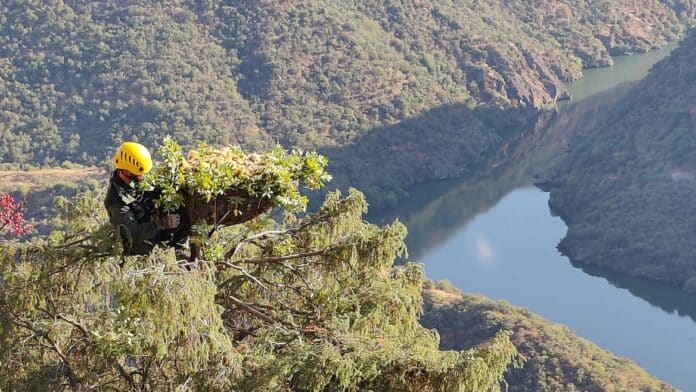In an effort to preserve and recover the population of black vultures on the Iberian Peninsula, the High-Altitude Intervention Group (GIAM) has intensified its efforts over the past week. They have worked on 17 platforms, installing three new artificial nests designed to facilitate the establishment of these birds, whether local vultures or individuals released from rehabilitation centers. To attract vultures, they have placed resin figures that imitate their appearance.
This effort is part of the LIFE Aegypius Return project, supported by the European Union, which aims to restore this endangered species in neighboring Portugal and improve connections between colonies across the Spain–Portugal border. Listed as a vulnerable population, the black vultures are the largest of their kind on the peninsula, reaching a wingspan of 280 centimeters and weighing up to ten kilograms.
In their reproductive cycle, these birds lay a single egg and build extensive nests, located in tall trees to facilitate the flight of their young. Additionally, they select isolated areas to minimize human interference.
In parallel, the Community of Madrid carries out detailed surveillance in the Sierra del Guadarrama National Park. There resides the fourth-largest colony of black vultures in Spain, located in the Alto Lozoya Special Protection Area for Birds (ZEPA). Forest rangers carry out annual monitoring in June, assessing the health of the chickens through blood sampling and placing identification rings on them. This method, initiated in 2003, has been crucial for the monitoring and protection of the species, with a notable increase in individuals, reaching 285 pairs in 2025.
In addition to the black vultures, other species have experienced growth in the region. The black stork has increased its population, and the white stork already has more than 2,300 nests. For their part, the Iberian imperial eagle and the griffon vulture have also seen significant increases in their numbers.
This set of efforts reflects a clear commitment to the conservation and recovery of these emblematic species, ensuring their presence in the Iberian skies for future generations.



